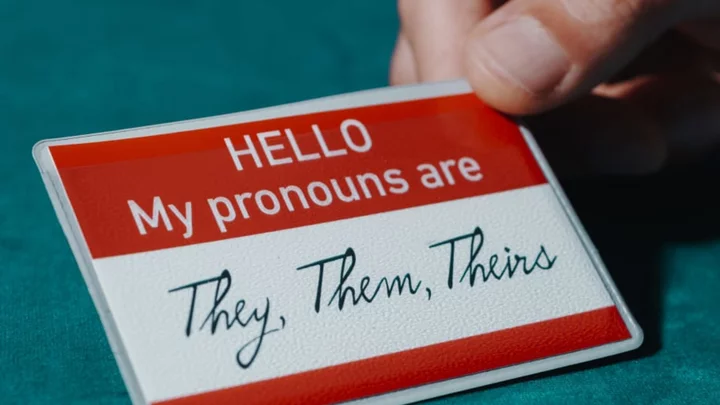Whether they’re recent college graduates or retirees, substitute teachers are a diverse bunch with a range of academic specialties and skills. No matter their background, they often arrive at work unsure of exactly who and what they’ll be teaching—but they usually have some tricks up their sleeves to get oriented quickly. Mental Floss spoke to a few subs to get the inside scoop on everything from why they love pregnant teachers to how they spot troublemaker pupils.
1. Morning people get more substitute teaching jobs than night owls.
Substitute teachers must be willing to have a (very) flexible schedule, and it helps if they’re morning people. As early as 5:00 a.m., subs get a phone call—automated or from someone who works in the school’s office—offering them a job for that day. If they accept, they have an hour or two to get out of bed, get ready, and report to work. Some schools now use an email notification system, but early morning phone calls are more effective given the time-sensitive, often unexpected nature of substitute teaching.
2. First impressions are important when it comes to substitute teaching.
According to Kevin, a substitute teacher who works at schools in Southern California, dealing with new groups of students can be challenging. “It’s very hard to establish authority in the classroom. As a newcomer, you’re the foreigner,” he explains.
To immediately establish their authority, some substitute teachers practice speaking with a powerful voice, exhibit confident body language, and shut down any disruptions swiftly and decisively. But no matter how confident a sub is, some students will take advantage of the teacher’s unfamiliarity with the class. “It’s hard to write up a student who you can’t name. In a high school setting, you usually get 30 to 38 students a period for five or six periods. That’s a lot of students who may or may not want to test their bounds that day,” Kevin says.
3. Subs are an eclectic bunch.
Substitute teachers range in age from recent college grads working toward their teaching certification to elderly retired people. But what unites them is a love of teaching. Beverly, a substitute teacher who has taught for over 56 years, says that subbing keeps her sharp and active. “I do it for mental stimulation and because it’s a terrific service. You have to stay stimulated and involved with people,” she says. “I find youngsters to be so forthright and honest. The kids light up my life.”
Besides being a variety of ages, substitute teachers also come from a variety of professions. “You can’t believe how many teachers used to be lawyers but couldn’t stand it,” Beverly says. Everyone from former nurses and flight attendants to chemical engineers have earned their teaching certificates and become subs, bringing their real-world experience into the classroom.
4. There’s a reason a substitute teacher’s face might look familiar.
In schools in Los Angeles and New York, many struggling actors work as substitute teachers because they can balance teaching gigs with auditions and short-term film shoots. Like actors, subs must be able to speak in front of groups of people, improvise when they don’t have good instructions, and be quick on their feet when something goes wrong.
5. Substitute teachers aren’t a fan of school holidays.
Because substitute teachers don’t have a set salary and work one day at a time, many of them face financial uncertainty, especially when holidays roll around. “Holidays can be devastating financially,” Kevin explains. When a school has the whole week of Thanksgiving off, subs don’t see that as a chance to relax. “In reality, a quarter of your paycheck for that month is gone,” Kevin says. “When you have student loans, insurance, etc. to pay, that extra little bit taken off your paycheck may mean you’re just scraping by.”
6. Substitute teachers have tricks to learn names quickly.
Facing a classroom of unfamiliar faces can be daunting, but subs have a few tricks up their sleeves to memorize student names in a flash. While some subs make seating charts as they take attendance, others use mnemonic devices to remember monikers. Beverly admits that she doesn’t use anything fancy, but because she substitute-teaches math and science classes at the same school, she sees the same kids year after year. “I see the same youngsters out of junior high and into high school, but I do have a seating chart as well. They’re always amazed when I know their names,” she explains.
7. They love pregnant teachers.
Subs seeking job stability hit the jackpot when full-time teachers get pregnant. “At the school I currently work at, there’s a woman who is subbing for the whole semester for a second grade teacher who is out on maternity leave,” says Kyle, a science teacher who worked as a sub before getting a full-time teaching gig. Besides pregnancies, long-term health challenges and injuries can present an opportunity for subs to get a steady gig. Beverly says she once took over for an entire semester because of another teacher’s broken hip.
8. Some substitute teachers are quite familiar with busywork.
Novelist Nicholson Baker, who wrote about his experience going undercover as a substitute teacher at six schools, describes the astonishingly large amount of busywork that subs must assign students. “I passed [work sheets] out by the thousands,” he noted in The New York Times.
While Baker laments the “fluff knowledge” and vocabulary lists that subs are expected to force students to memorize and regurgitate, some subs do teach lesson plans. Kyle, who has a math and science background, explains that some teachers felt comfortable with him teaching the lesson plan so the students wouldn’t fall behind. “I’d teach it and assign homework accordingly for what we covered in class,” he says. But he admits that for middle school or non-science classes, he would sometimes simply be given a video to show the kids, or a work sheet or quiz to pass out.
9. The reputation of a substitute teacher can precede them.
Once a sub has taught at the same school a few times, they can develop a reputation—good or bad—among students. “When I first started subbing, I was 23 or 24, so I wasn’t much older than these kids—especially the seniors—and I think they saw me more as a peer than an authority figure,” Kyle explains. “I thought if I kept a light and fun atmosphere, kids would show their appreciation with respect. But that’s not how kids’ minds work. If you give a little, they’ll want more. So I became stricter and sterner as I went on,” he adds.
10. Substitute teachers can often spot troublemakers fast.
Although it might seem obvious which students are talking out of turn or giving the sub a hard time, substitute teachers have another way to quickly identify any mischievous students. “Usually, if a teacher has a really outrageous student, they’ll leave a note of warning for the sub. Sometimes the teacher will also leave a list of who the helpful students are,” Beverly says.
11. Substitute teachers may deal with inappropriate student behavior.
Kyle says that due to his young age and easygoing nature, some students tried to push the boundaries and act inappropriately with him: “[Students] would talk about or say things in front of me that I know they would never say in front of a teacher. I was once asked to party with some of the kids. Girls would try and flirt with me.” While male students typically tried to talk to him about basketball, female students frequently asked him if he had a girlfriend. “I would lose control of classrooms sometimes. Kids would get very wild, and sometimes would say inappropriate or abusive things to other students without fear of discipline,” he admits.
12. Substitute teachers are honored on a special day in November.
The National Education Association established the annual Substitute Educators Day on the third Friday in November to honor subs around the country. Besides bringing awareness to the work that substitute teachers do, Substitute Educators Day supports subs in trying to get health benefits, professional development, and fair wages.
13. Substitute teachers can make lasting impressions on their students.
Although most subs don’t see the same kids day after day, they can have a meaningful impact upon their students’ lives. “As an outsider, especially a younger teacher, students will often listen to you as someone who recently was in their shoes. Sometimes you talk to them one-on-one and give them a new perspective on why they should care about their schoolwork,” Kevin says.
And some students listen to their sub’s advice on studying and planning for the future. According to Kevin, students have approached him as he walked down the halls to thank him for encouraging them to get better grades.
“These experiences are few and far between, but it’s crazy to think that even these small talks with students can actually have a lasting impression,” he says.
This article was originally published in 2017 and has been updated in 2023.
This article was originally published on www.mentalfloss.com as 13 Secrets of Substitute Teachers.









